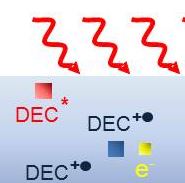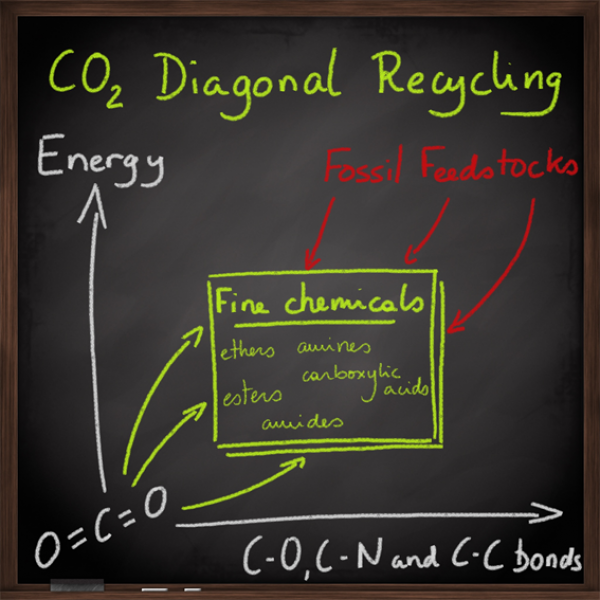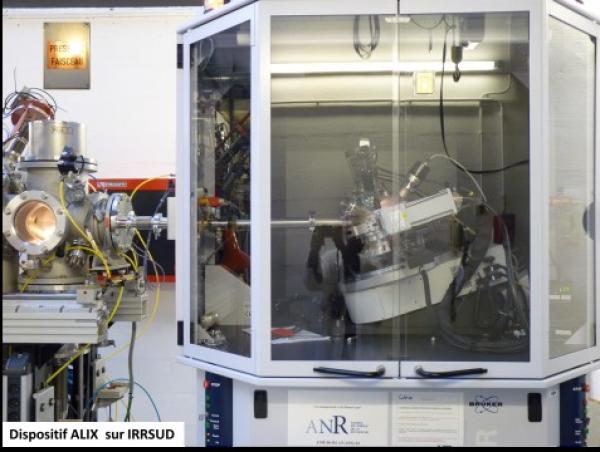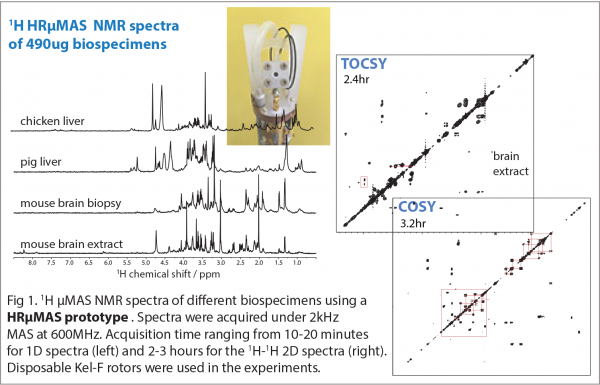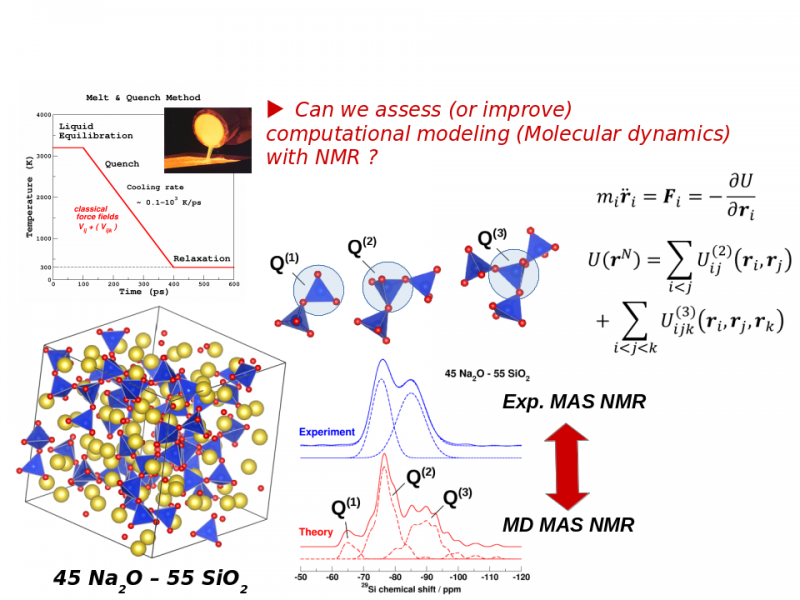Pages scientifiques 2017
Nanoparticle size and size distribution play an important role in nanotechnology, because the intended effects depend on the size of the particles in the nanomaterial. In the regulatory context, the definition of a nanomaterial is based on the number size distribution of the particles. The EC recommendation for the definition of a nanomaterial gives “50 % or more of the particles in the number size distribution, one or more external dimensions is in the size range 1 nm – 100 nm”.
SAXS (“Small Angle X-Rays Scattering”) allowed a precise structural characterization of nanoparticles on a large number of objects by performing in-situ and non-destructive measurements (shape, size, size distribution, specific surface). Recent publications, Europeans projects (EMPIR Innanopart) and works on intercomparison measurements showed that SAXS and microscopy techniques gives very comparable results.
Contexte
La conversion de petites molécules telles que CO₂, CO, H₂ et SO₂ nécessite l'utilisation de catalyseurs sélectifs et hautement réactifs pour favoriser la conversion de ces matières premières stables avec un rendement énergétique élevé. Dans le groupe, nous développons de nouveaux composés organiques et organométalliques pour l'activation de petites molécules et leur transformation catalytique en produits à ahute valeur ajoutée. Les études mécanistiques, dérivées du calcul et des études spectroscopiques, sont des clés pour découvrir de nouveaux chemins réactionnels et dévoiler les propriétés stéréo-électroniques des catalyseurs idéaux.
Context
The conversion of small molecules such as CO₂, CO, H₂ and SO₂ requires the use of selective and highly reactive catalysts to promote the conversion of these stable feedstocks with a high energy efficiency. In the group, we develop novel organic and organometallic compounds for the molecular activation of small molecules and their catalytic transformation to valuable products. Mechanistic studies, derived from computation and spectroscopic investigations, are key steps to unveil new reaction paths and unveil the stereo-electronic properties of ideal catalysts.
À ce jour, 95% de nos produits chimiques reposent sur des ressources non renouvelables, à savoir les hydrocarbures. Étant donné que les ressources fossiles sont une matière première limitée et que leur utilisation étendue résulte de l'accumulation problématique de CO₂ atmosphérique, l'industrie de la chimie organique est confrontée à des défis importants pour trouver d'autres matières premières et utiliser des sources d'énergie sans carbone.
Pour résoudre ce conflit écologique et économique, de nouvelles méthodes pour le recyclage chimique du dioxyde de carbone sont nécessaires. Une voie peut-être d'utiliser du CO₂ comme source de carbone₁ pour la production de produits chimiques organiques. Cependant le CO₂, en tant que déchet, est thermodynamiquement et cinétiquement difficile à transformer et seulement trois procédés chimiques de recyclage du CO₂ ont été industrialisés à ce jour.
CO₂, an attractive and renewable carbon source for the production of chemicals.
To date, 95% of our chemical commodities rely on non-renewable resources, namely hydrocarbons. Because fossil resources are a limited feedstock and their extensive use results in the problematic accumulation of atmospheric CO₂, the organic chemistry industry will face important challenges in the next decades to find alternative feedstocks and use carbon-free energy sources, to embrace sustainability. To solve this ecological and economical conflict, new methods for the chemical recycling of carbon dioxide are needed, to use CO₂ as a C₁ building block for the production of organic chemicals. Yet, as a waste, CO₂ is thermodynamically and kinetically difficult to transform and only three chemical processes recycling CO₂ have been industrialized to date.
|
Fidèle à sa mission d’accueil des recherches interdisciplinaires, le CIMAP (Centre de recherche sur les Ions, les MAtériaux et la Photonique) accueille des expériences d’origines diverses allant de la physique du solide à la radiobiologie, distribuées sur 3 lignes de faisceau permettant de couvrir une grande gamme d’énergie : IRRSUD (~1MeV/A, sortie C0), D1/SME (~10MeV/A, sortie CSS1) et D1/HE (sortie CSS2). Ainsi pour 2017, 45 expériences sont programmées (soit environ 1200 heures de faisceau) impliquant une centaine d’expérimentateurs venus du monde entier. Ce nombre est trop important pour qu’elles soient toutes décrites ici, on peut cependant très schématiquement les regrouper en grandes familles que sont la physique du solide et ses applications, la chimie sous rayonnement et ses applications, l’astrophysique, la physique atomique et la radiobiologie. |
1. HR-MAS of micro-scale specimens
1H HRMAS (High-Resolution Magic-Angle Spinning) NMR spectroscopy has found success in the study of metabolome in heterogeneous biospecimens, such as cells, tissues and orgamis, owing to its sample non-destructive nature and simplicity data aquisition. However, NMR in general is an insensitive spectroscopic technique relying on large sample quantity, typically 10-20 mg per spectral data; and it has limited the metabolic invertigations in biology and in medicine. For this reason, there is presently a need to develop new NMR methodologies that are capable for analyzing small-scale specimens. One approach is the use of a micro-size detection under MAS condition, but unlike the standard uMAS commerical probe, it must offers high detection sensitivity without compromising the spectral resolution (i.e., <0.002ppm). Here, we are developing a HR-MAS methodology capable of offering excellent spectral quality in sensivity and resolutoin for metabolic applications.
References:
'Evaluation of a high-resolution micro-size magic angle spinning (HRuMAS) probe for NMR-based metabolic studies of nanometer samples'
N. T. Duong, Y. Endo, T. Nemoto, H. Kato, A-K Bouzier-Sore, Y. Nishiyama, A. Wong, Anal. Methods 8 (2016) 6815-6820.
'High-resolution NMR-based metabolic detection of microgram biopsies using a 1 mm HRuMAS probe'
Y. Nishiyama, Y. Endo, T. Nemoto, A-K Bouzier-Sore, A. Wong. Analyst 140 (2015) 8097-8100.
Financial Supports:
- ANR-PRC (2016-2019) on HRuMAS.
- ANR-JCJC (2012-2015) : Développement et exploration de nouveaux micro-détecteurs RMN tournants pour des analyses métabolomiques de biopsies de petite masse – HRMACS
|
Fidèle à sa mission d’accueil des recherches interdisciplinaires, le CIMAP (Centre de recherche sur les Ions, les MAtériaux et la Photonique) accueille des expériences d’origines diverses allant de la physique du solide à la radiobiologie, distribuées sur 3 lignes de faisceau permettant de couvrir une grande gamme d’énergie : IRRSUD (~1MeV/A, sortie C0), D1/SME (~10MeV/A, sortie CSS1) et D1/HE (sortie CSS2). Ainsi pour 2017, 45 expériences sont programmées (soit environ 1200 heures de faisceau) impliquant une centaine d’expérimentateurs venus du monde entier. Ce nombre est trop important pour qu’elles soient toutes décrites ici, on peut cependant très schématiquement les regrouper en grandes familles que sont la physique du solide et ses applications, la chimie sous rayonnement et ses applications, l’astrophysique, la physique atomique et la radiobiologie. |
Nanoparticle size and size distribution play an important role in nanotechnology, because the intended effects depend on the size of the particles in the nanomaterial. In the regulatory context, the definition of a nanomaterial is based on the number size distribution of the particles. The EC recommendation for the definition of a nanomaterial gives “50 % or more of the particles in the number size distribution, one or more external dimensions is in the size range 1 nm – 100 nm”.
SAXS (“Small Angle X-Rays Scattering”) allowed a precise structural characterization of nanoparticles on a large number of objects by performing in-situ and non-destructive measurements (shape, size, size distribution, specific surface). Recent publications, Europeans projects (EMPIR Innanopart) and works on intercomparison measurements showed that SAXS and microscopy techniques gives very comparable results.
1. HR-MAS of micro-scale specimens
1H HRMAS (High-Resolution Magic-Angle Spinning) NMR spectroscopy has found success in the study of metabolome in heterogeneous biospecimens, such as cells, tissues and orgamis, owing to its sample non-destructive nature and simplicity data aquisition. However, NMR in general is an insensitive spectroscopic technique relying on large sample quantity, typically 10-20 mg per spectral data; and it has limited the metabolic invertigations in biology and in medicine. For this reason, there is presently a need to develop new NMR methodologies that are capable for analyzing small-scale specimens. One approach is the use of a micro-size detection under MAS condition, but unlike the standard uMAS commerical probe, it must offers high detection sensitivity without compromising the spectral resolution (i.e., <0.002ppm). Here, we are developing a HR-MAS methodology capable of offering excellent spectral quality in sensivity and resolutoin for metabolic applications.
References:
'Evaluation of a high-resolution micro-size magic angle spinning (HRuMAS) probe for NMR-based metabolic studies of nanometer samples'
N. T. Duong, Y. Endo, T. Nemoto, H. Kato, A-K Bouzier-Sore, Y. Nishiyama, A. Wong, Anal. Methods 8 (2016) 6815-6820.
'High-resolution NMR-based metabolic detection of microgram biopsies using a 1 mm HRuMAS probe'
Y. Nishiyama, Y. Endo, T. Nemoto, A-K Bouzier-Sore, A. Wong. Analyst 140 (2015) 8097-8100.
Financial Supports:
- ANR-PRC (2016-2019) on HRuMAS.
- ANR-JCJC (2012-2015) : Développement et exploration de nouveaux micro-détecteurs RMN tournants pour des analyses métabolomiques de biopsies de petite masse – HRMACS












